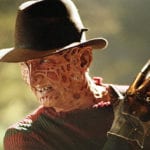 Creepy
Creepy  Creepy
Creepy  Technology
Technology 10 Scientific Breakthroughs of 2025 That’ll Change Everything
 Our World
Our World 10 Ways Icelandic Culture Makes Other Countries Look Boring
 Misconceptions
Misconceptions 10 Common Misconceptions About the Victorian Era
 Mysteries
Mysteries 10 Strange Unexplained Mysteries of 2025
 Miscellaneous
Miscellaneous 10 of History’s Most Bell-Ringing Finishing Moves
 History
History 10 Great Escapes That Ended Right Back in Captivity
 Weird Stuff
Weird Stuff 10 Fascinating Things You Might Not Know About Spiders
 Food
Food 10 Everyday Foods You Didn’t Know Were Invented by the U.S. Military
 History
History 10 Odd Things Colonial Americans Kept at Home
 Creepy
Creepy 10 More Representations of Death from Myth, Legend, and Folktale
 Technology
Technology 10 Scientific Breakthroughs of 2025 That’ll Change Everything
 Our World
Our World 10 Ways Icelandic Culture Makes Other Countries Look Boring
Who's Behind Listverse?

Jamie Frater
Head Editor
Jamie founded Listverse due to an insatiable desire to share fascinating, obscure, and bizarre facts. He has been a guest speaker on numerous national radio and television stations and is a five time published author.
More About Us Misconceptions
Misconceptions 10 Common Misconceptions About the Victorian Era
 Mysteries
Mysteries 10 Strange Unexplained Mysteries of 2025
 Miscellaneous
Miscellaneous 10 of History’s Most Bell-Ringing Finishing Moves
 History
History 10 Great Escapes That Ended Right Back in Captivity
 Weird Stuff
Weird Stuff 10 Fascinating Things You Might Not Know About Spiders
 Food
Food 10 Everyday Foods You Didn’t Know Were Invented by the U.S. Military
 History
History 10 Odd Things Colonial Americans Kept at Home
10 Brilliant Films That Bombed at the Box Office
What is it that separates a box-office hit from a box-office dud? Is it the marketing and trailers? How star-studded the cast is? Or maybe it all depends on what audiences are craving at the time. But if the following films are anything to go by, it seems it often has little to do with the quality of the actual film.
Many movie fans now consider the following films to be cult classics. Others are legitimate contenders for the title of the greatest film ever made. But not one put enough butts in seats during their initial runs in theaters to stop them from becoming box office bombs.
Related: 10 Movie Trailers That Gave Away Too Much
10 The Big Lebowski (1998)
You might think anything directed by the Coen Brothers has to be a sure thing. After all, they have repeatedly put out instant classics again and again, including the likes of No Country for Old Men and Fargo. But one of their most comical and beloved features, The Big Lebowski, did not spark much interest during its initial theatrical run, even with its all-star cast.
The film, which follows the misadventures of The Dude (Jeff Bridges), only grossed around $18 million on a $15 million budget—not the worst disaster on this list by any means, but far short of studio expectations. A fairly uninspiring trailer probably did not help matters, nor did the muted critical response it received. But thankfully, the all-too-quotable dialogue, quirky humor, and ridiculous but lovable anti-hero ensured the movie eventually endeared itself to audiences following its home release.[1]
9 Treasure Planet (2002)
Directors Ron Clements and John Musker had been pitching Treasure Planet since 1985, only for executives to reject the idea no less than three times. But after giving the public such mega-hits as The Little Mermaid and Aladdin, the duo used their contract negotiations to get Disney to green-light the film in the early 2000s. Unfortunately, it did not take long for Disney to realize they had a cinematic dud on their hands following its release. They scrapped a planned sequel when Treasure Planet only brought in $109.6 million on a $140 million production budget.
It is hard to say what went wrong here. Most likely, it was the culmination of multiple factors, including opening week competition from Harry Potter and the Chamber of Secrets and the rise in popularity of CGI animation. But despite its failures, there is a lot to love about Treasure Planet. The plot is essentially Robert Louis Stevenson’s Treasure Island, but in space. It features a fantastical universe, unique visuals, and a likable hero. And let’s be honest, who saw this movie and did not immediately want to go “space surfing?”[2]
8 Scott Pilgrim vs. the World (2010)
This pop culture hit about a slacker musician named Scott (Michael Cera) battling his girlfriend’s exes is now something of a phenomenon, proving popular enough to spawn an anime series a decade after its release. But when Scott Pilgrim first made his cinematic appearance back in 2010, the film did not even come close to meeting financial expectations. Indeed, it failed to gross $50 million on a budget somewhere in the realm between $60 and $80 million.
The reasons for its initial failure are hard to pinpoint. Perhaps it was simply a matter of director Edgar Wright’s unique style of comedy proving too difficult to condense down into a decent trailer. But that many of the film’s cast, including Kieran Culkin, Mary Elizabeth Winstead, Michael Cera, Brie Larson, and Chris Evans, have all gone on to have glittering careers has certainly helped Scott Pilgrim vs. the World to reach the audiences it deserved upon release.[3]
7 Donnie Darko (2001)
With its trippy and atmospheric visuals, complex narrative, and themes tackling eighties politics, mental instability, and wormholes, Donnie Darko was always going to be a hard sell to cinema-going audiences. But unlike other movies on this list, the reason Richard Kelly’s directorial debut flopped is clear as day: it features a plane crash as a central plot point, and it was released in October 2001, one month after 9/11.
Perhaps unsurprisingly, distributors were wary of pumping money into advertising the film in the wake of history’s most infamous plane hijacking. So the film came and went from theaters with few knowing it even existed. Thankfully, it would be rediscovered by audiences later and became a cult sensation.[4]
6 Heathers (1989)
Heathers follows the story of Veronica (Winona Ryder), a teenage outcast who finds herself in the most popular clique in school. However, while enjoying her social position, she hates her friends’ bratty and bullying attitudes and wishes she could do something about it. Enter new love interest J.D. (Christian Slater), who is secretively plotting the fatal ruin of the clique and the rest of the school.
At first glance, Heathers looks like a chic flick or a teenage coming-of-age story. But in reality, it is more of a darkly satirical B-movie that openly mocks the films it appears to imitate. And while its cynical approach and highly original script earned it plenty of praise and awards, it was never really made to appeal to the mainstream. Indeed, Wiona Ryder’s agent even begged the actress to not take the role as the agent felt it was career suicide. However, while it suffered at the box office, returning only £1.1 million of a £3 million budget, this dark comedy soon gained the cult status it was destined to receive.[5]
5 The Iron Giant (1999)
Based on the 1968 science fiction novel by Ted Hughes, The Iron Giant tells a tale of a friendship between a young boy named Hogarth and a giant alien robot that the U.S. military wants to destroy. The film was directed by Brad Bird, who went on to direct such films as Ratatouille and The Incredibles, and it was well received by critics and audiences alike. Well, by the audiences who actually turned out to see it, that is, as The Iron Giant did not do well in the theaters. Indeed, the movie only grossed $31.3 million worldwide against a production budget of $50 million.
So, what went wrong here? One issue might be that it was simply too much of a departure from the classic Disney film model for success, as it scrapped musical numbers, princes and princesses, and fairy tales for a cold war setting.
The second issue was that Warner Bros, coming off a previous flop with Quest for Camelot (one film you will not see on this list), was unwilling to pump big money into advertising another animated feature. Indeed, it was not until The Iron Giant entered the home video market that Warner Bros, realizing what they had on their hands, finally decided to market the thing. And that, combined with word-of-mouth and critical praise, finally garnered the animated film the following it deserves.[6]
4 Fight Club (1999)
Today, it is almost impossible to think of Fight Club as anything but a cultural phenomenon. After all, do you know anyone who does not know the first two, often broken, rules of Fight Club? But back in 1999, the movie, seen as “a film for no one” by some executives at Fox, greatly underperformed at the box office, bringing in $37 million stateside from a $65 million budget. And while the film did do well enough to recuperate its losses worldwide, it was largely written off as an overall failure.
Both lead actor Edward Norton and director David Fincher have since spoken out about the film’s initial failures, noting that distributor 20th Century Fox did not seem to know how to market the movie. According to Fincher, one unnamed Fox executive even told him that “men do not want to see Brad Pitt with his shirt off. It makes them feel bad. And women don’t want to see him bloody. So I don’t know who you made this movie for.”[7]
3 The Assassination of Jesse James by the Coward Robert Ford (2007)
This revisionist western, written and directed by Andrew Dominik, was plagued with issues before it even made theaters. Originally, Dominik envisioned the film as a three-hour epic scheduled for 2006. However, frequent edits from the studio resulted in a cut-down runtime and pushed back its release from 2006 to September 2007.
When it was released, The Assassination of Jesse James received favorable reviews from critics. But despite an all-star cast and award-season success, it flopped at the box office, with its $4 million domestic earnings barely touching its $30 million production budget. Even the better $15 million it grossed worldwide was not nearly enough to save it from disaster. That did not stop a rabid fanbase from forming around the western, though, with many organizing “re-releases” of the film under the banner “Jesse James Revival.”[8]
2 Blade Runner (1982) & Blade Runner 2049 (2017)
It is one thing for a box office bomb to later become a cult hit. It is another thing entirely for that to happen twice for the same franchise. But that is exactly what happened with Blade Runner.
The original 1982 film brought together director Ridley Scott and actor Harrison Ford, both fresh off partaking in some of the biggest science fiction films of all time (Alien and Star Wars, respectively), to make what seemed a surefire success. But Blade Runner’s slow-burn pace, neo-noir influences, and crushingly dystopian setting were a hard sell for audiences used to laser fights and action-orientated adventures. And while box office sales were not a complete disaster, Blade Runner only gained its cult following in the ensuing years after leaving theatres.
By the time the 2010s rolled around, studios were willing to bank on a sequel. But again, what looked like a surefire success, struggled to produce the financial numbers expected at the box office, resulting in initial plans for a sequel to be scrapped. History continued to repeat itself, though, and Blade Runner 2049 is now heralded as a modern cult classic, much like its predecessor.[9]
1 Citizen Kane (1941)
Orson Wells’s directorial debut, which he also starred in and co-wrote, is considered by many filmmakers, enthusiasts, and critics alike as one of, if not the, greatest film ever made. But you would have had a hard time convincing anyone of that in the 1940s, as Citizen Kane struggled to recoup its costs at the box office and quickly faded from public view and memory.
At least part of the issue was that media baron William Randolph Hearst, on whom Wells based much of his script, took issue with the film’s satirical fictionalization of him. And he would subsequently ban the feature from appearing in any of the newspapers he owned.
It would only a decade later, in the 1950s, that the feature started to make a comeback. Part of this was due to it becoming a feature on late-night TV. But it also started to gain favor with many critics across the world, who reevaluated Citizen Kane and heralded it as one of the all-time greats. And it has been topping prestigious best-movies-ever lists ever since.[10]








